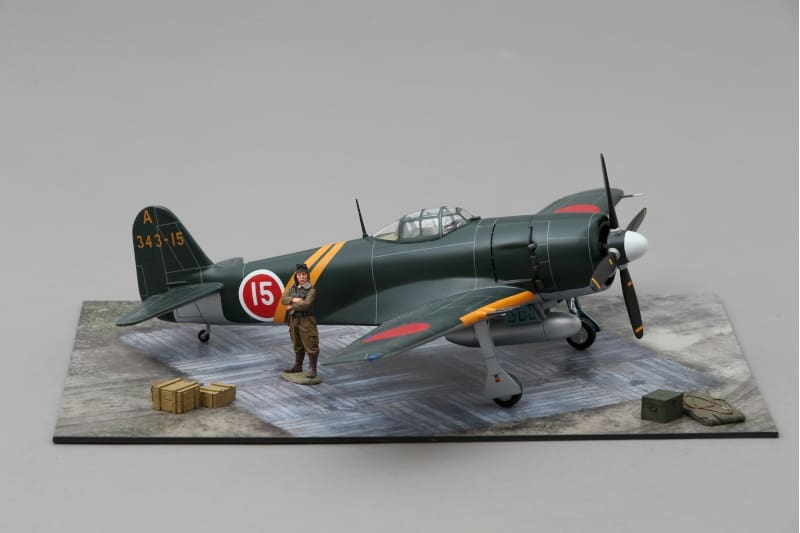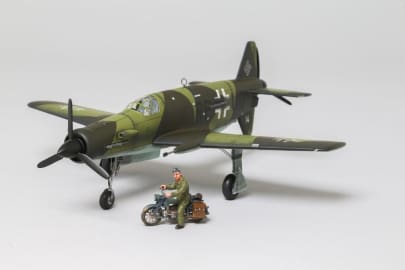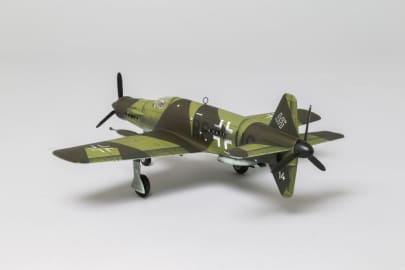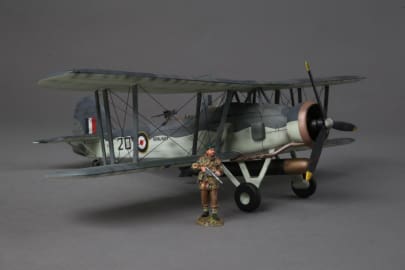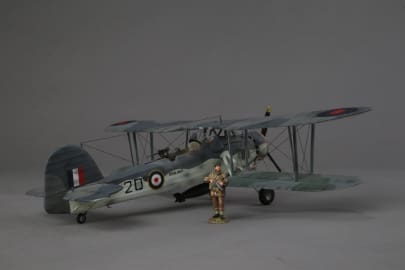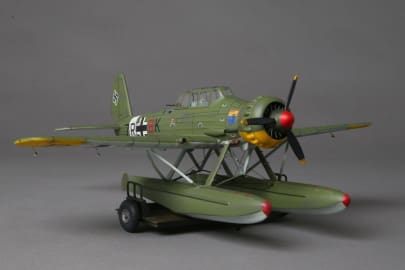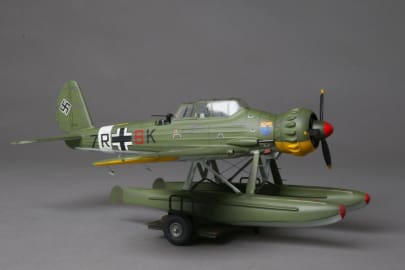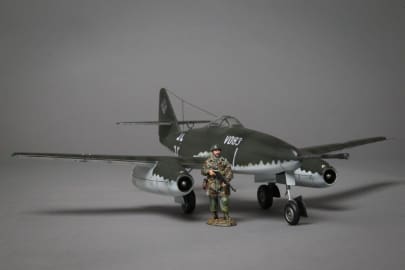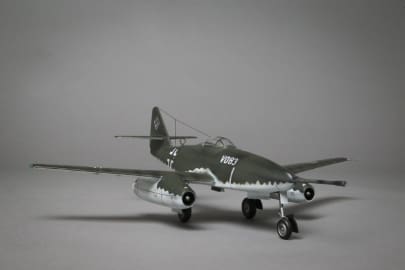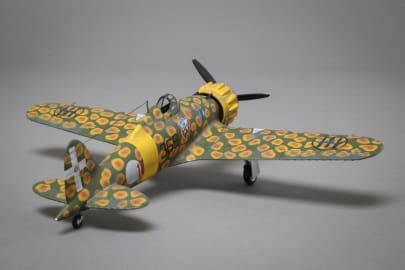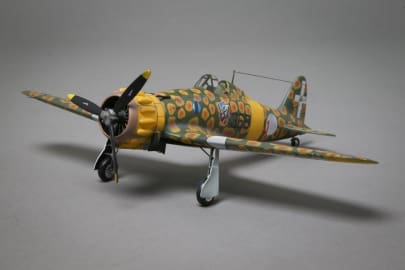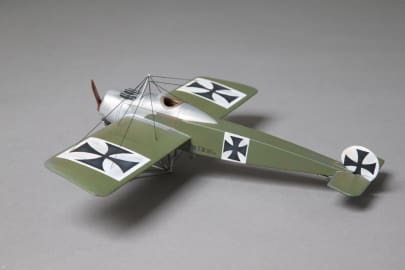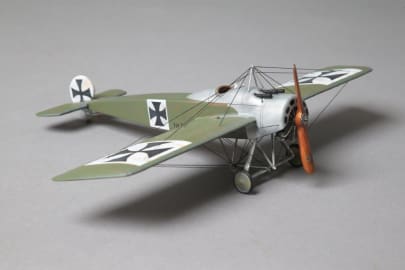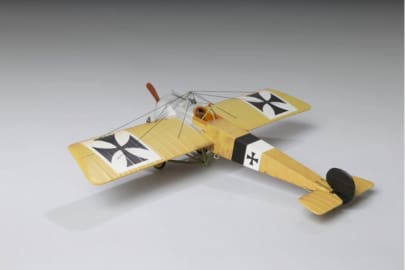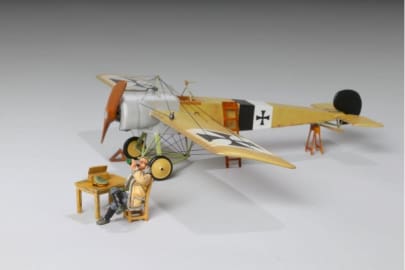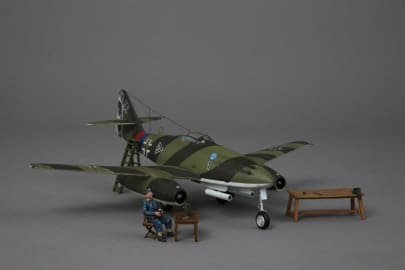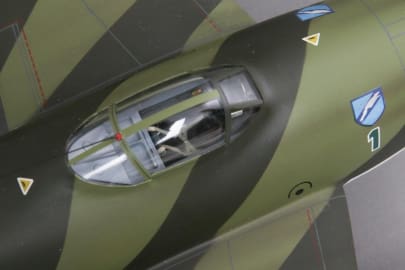- Free shipping available on orders over £100 (UK) £250 (EU) and $300 rest of the world
WOW298 Kawanishi N1K2-J Shiden Kai ‘George’
Out of Stock
Description
Description
Despite some early setbacks in design, the Kawanishi “Shiden” (or “violet lightning” – codenamed “George” by the Allies), was an exemplary fighter that was capable of going head-to-head with even the fabled American F6F Hellcat series. Operating from land-bases, the Shiden featured a powerful engine, streamlined fuselage and potent armament display that provided Japanese forces with a fast and heavy-hitter in the latter stages of the Pacific War. Despite their successes, the system was only fielded in 1,400 examples, limiting their reach and overall potential to an extent.
The Kawanishi design bureau had already been at work on a versatile floatplane and saw an opportunity to extend that design into a land-based variant. Using the same developed airframe, the N1K1-J was born from the existing N1K1 floatplane and featured an all-new Nakajima radial piston engine along with a newly-engineered landing gear system. The prototype N1K1-J premiered in late 1942 with production beginning the following year.
Kawanishi produced a very slender, almost featureless, design making for one streamlined airframe. Wings were low-mounted monoplanes just under and forward of the high-mounted cockpit, offering up good visibility. The engine was well forward of the cockpit and featured a large propeller hub and fitted engine cowling. All vertical and horizontal surfaces were curved and straight-edged, no doubt adding to the performance capabilities of the system. Power was derived from a single Nakajima NK9H Homare 21 radial piston engine producing an impressive 1,990 horsepower. Performance statistics reported a top speed of up to 363 miles per hour, a service ceiling of nearly 20,000 feet and an operational range of up to 890 miles. Armament consisted of a pair of 7.7mm Type 97 machine guns in the nose engine cowling and an additional 4 x 20mm cannons in the wings. Later models would feature provisions for external underwing bomb racks, adding to the already impressive armament array of this aircraft.
Entry into the war for the Shiden initially produced some mixed results as the powerplant proved to be in need of some more attention. Additionally, with new design elements on existing airframes come new problems, such being the case with the landing gear system (a system obviously not present in the floatplane design). On the combat side of things, however, the Shiden design never failed, proving to be more than a match for its American counterparts. The base N1K1-J series was produced in three follow-up variants that addressed different armament arrangements and bomb loads. An “improved” N1K1-J model was formed in the N1K1-2 series and addressed the aforementioned engine and landing issues along with other subtle design elements. By war’s end, the Shiden had already made its mark as at the very least one of the top three Japanese fighters of the war.
Our warbird is flown by Naoshi Kanno. Kanno enrolled in the Japanese Navy Academy in December 1938, graduating in February 1943 in the 70th class. Upon completion of flight school, he was assigned to the front lines in April 1943, joining the 343rd Naval Air Group, quickly becoming a squadron commander (buntai leader) and by July 1944, leading (as the hikotai leader) the 306th Squadron of the 201st Naval Air Group. He gained the reputation as a rebellious but skilful fighter pilot and was credited with 25 victories. He was killed in action on 1st August 1945 in the vicinity of Yakushima at the controls of his aircraft.
This warbird is 1/30 scale. This comes with a free RS057C Figure



